Gie Goris was van december 1990 tot september 2020 voltijds actief in de mondiale journalistiek, eerst als hoofdredacteur van Wereldwijd (1990-2002), daarna als hoofdredacteur van MO* (2003-juli 20
The end of coal is not in sight. Neither is the end of injustice
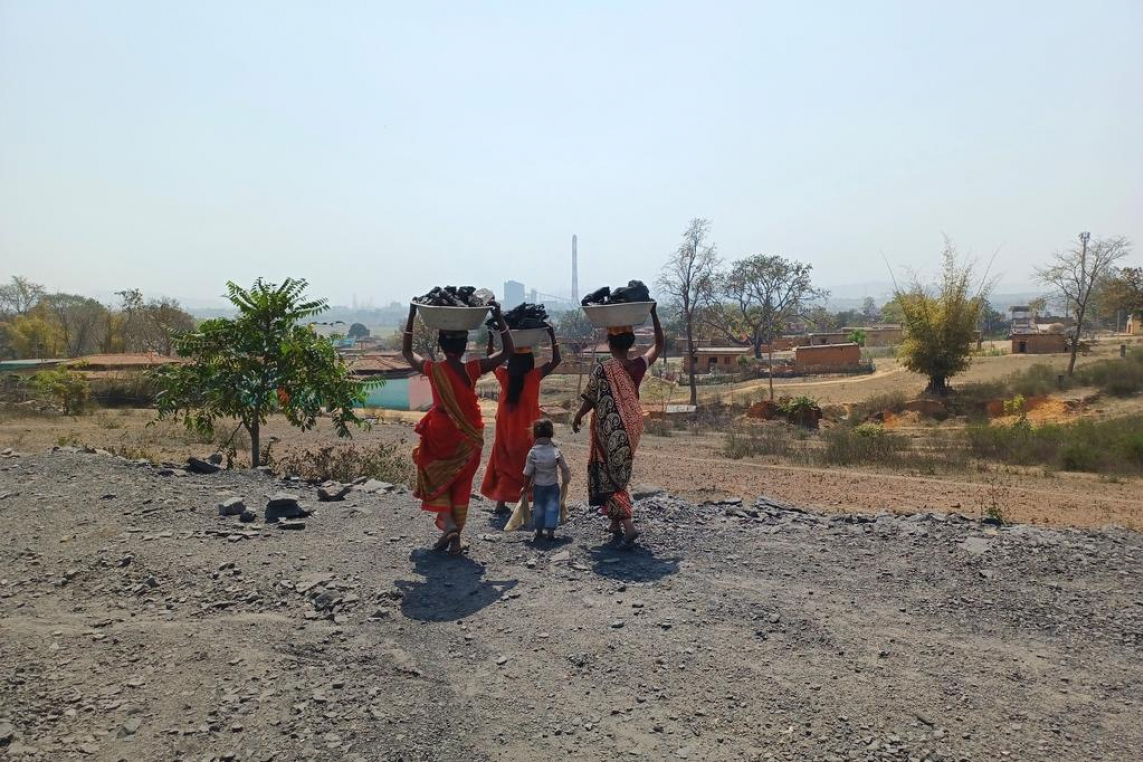
Women emerge from the Amrapali coal mine near Hazaribagh with collected pieces of coal on their heads.
Gie Goris (CC BY-NC 2.0)
Each new report by the IPCC shows how devastating the impact of the climate crisis is and will be, and it does so with increasing urgency, even alarm. That underscores how quickly and thoroughly the world needs to make a fundamental energy transition. But how can that be done in a country that is dependent on coal? Gie Goris travelled to Jharkhand in India for answers to that question. ‘Anyone proposing a just transition, should start by making the coal economy just.’
‘Where does Europe get the arrogance to lecture India?’ Sunita Narain vehemently objects when I tell her that I am in India to investigate how the country can make the energy transition to renewables as quickly as possible. Today, coal accounts for more than 70 per cent of electricity generation. That results in annual emissions of 1.1 gigatonnes of CO2, or 2.5% of global emissions. If the world wants to keep global warming below 2°C, coal has to end as soon as possible.
‘All fossil fuels must be phased out, not just the one the South is counting on’
Sunita Narain is the director of the Centre for Science and Environment, one of the strongholds of the Indian environmental movement. So I don’t need to tell her how urgent the climate problem is, nor how pernicious coal is. Even less do I need to tell her what India should do.
‘The West, having exhausted the planet’s carbon budget with its industrial revolution and explosive consumption, now feels entitled to tell the rest of the world how to behave responsibly. At the same time, the EU declares natural gas ‘green’ because it needs that fossil fuel. The reality is that all fossil fuels must be phased out, not just the one the South is counting on’, she concludes.
Incredible India!
I take a rattling bus to Dhanbad, the cradle of Indian coal, in the state of Jharkhand. The hills that loom left and right and front and back as we approach the city are not mountains. They are corpses. Depraved landscapes that have been stripped bare and dug up, then excavated and exhausted, stacked into bare and dead berms over a hundred metres high and kilometres long.
In between, huge craters of open mining complete the artificial hill landscape. Some are filled with water, reflecting the steel blue sky, others are filled with grey smoke billowing from cracks in the ground, still others tremble from the cranes, trucks and bulldozers.
The lifeless mounds of landscape debris are called overburden. The landscape, with its enormous biodiversity and fertile soil, its centuries-old cultures and economic potential, is reduced to waste, a nuisance, that which stands in the way of profit and growth. The French term for it, mort-terrain, comes close.
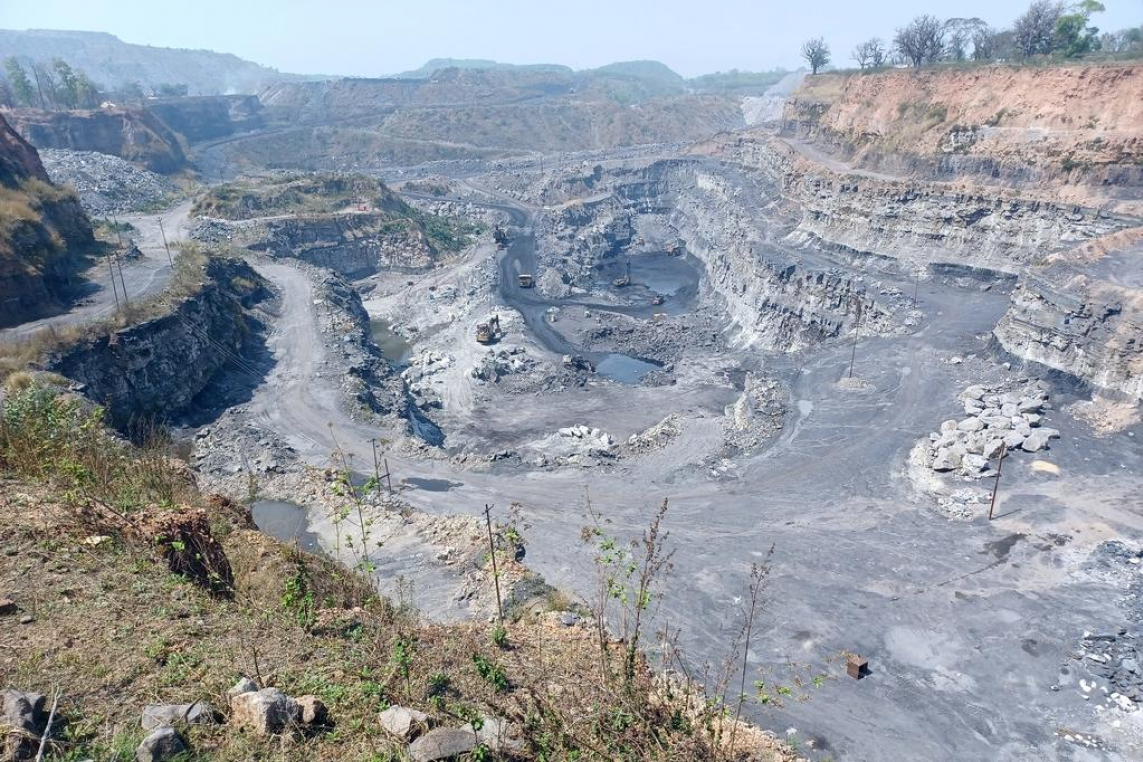
Open coal mines create obscure scars in the landscape. The Parej coal mine at Hazaribagh.
Gie Goris (CC BY-NC 2.0)
‘You can hardly argue for underground mining,’ says the now octogenarian anti-mining activist Xavier Dias in Ranchi. ‘There are far fewer accidents at work in open pit mines, far fewer deaths. But of course there are also just far fewer jobs, and that is a slow motion accident for the people who have to give up their land. The rule used to be that whoever lost 1.2 hectares of land got a permanent job in return. That is all in the past.’
For years, Dias has been closely involved in the struggle for rights and recognition of adivasis, the indigenous people who make up about a quarter of the population in Jharkhand state and often live on top of the state’s mineral wealth.
Coal in India
Last year, 777 million tonnes of coal were produced in India, an increase of 8.55 per cent over the previous year.
In 2020, India will consume 968 million tonnes of coal. 72 per cent for generating electricity.
The government estimates that consumption will rise to 1.78 billion tonnes per year by 2042.
Adivasis are seen as overburden: one of the nuisances to get rid of to reach the fuel that will propel India forward
For Incredible India-adepts and big industrialists, the adivasis are therefore literally overburden: one of the nuisances they have to get rid of before they can really get to the fuel that will propel India forward. The adivasis are not alone. In many places, low-caste villages also have to disappear. Between 1950 and 1995, 1,049,640 people had to move to make way for coal mines in Jharkhand, and since then mining has accelerated and there has been a massive switch to open pit mining.
‘We give our lives, but not our land’ — with this slogan the adivasi have long campaigned against the expropriations. But they could hardly ever really win that battle. ‘And so,’’ says doctor Mitalesh Dangi during a sit-in he held with some 20 villagers in front of the district office in Barkagaon, ‘we are now fighting for better compensation, for more and good jobs, for everyone who is affected.’
It is a never-ending battle. In the first decade of this century, at least 210 new coal mines were licensed in the state. Mining — not just coal, but also uranium, iron ore and copper ore, pyrite and graphite — is causing a spectacular decline in forest cover in Jharkhand. Dhanbad district, for example, originally had 65 per cent forest, now that is barely 0.05 per cent. Dhanbad presents itself as the coal capital of India because the city is surrounded by no less than 112 coal mines, with more being added all the time.
No country for old people
The white Suzuki rattles on all sides, especially under the driver, but he is not discouraged. Pro Street Driver, it says proudly on his door. The three-decade-old city car does on the lumpy dirt roads around the coal-mining town of Hazaribagh what the average SUV in suburban Belgium never has to do: drive where no car should be driving. Eventually, we stop at the edge of the gigantic crater of the Amrapali mine.

About fifty metres down, along the terraced excavated mine, a man is collecting coal. He is wearing a striking, bright yellow T-shirt. A canary in the coal mine, I think. He lives off the remains, which are too small to be scooped up with the mega-machines of opencast mining.
A little further on, another man fills jute sacks with scavenged coal. The colours of his clothes are barely visible under the black dust that covers him from head to toe. His bicycle is ready. On it, up to 200 kilograms of bagged coal will soon be loaded, to be sold to small brick kilns, roadside restaurants and urban households.
Three women and a child emerge from behind the edge of the mine. Each of the women carries a zinc bath, filled with coal, on her head. Their hands and faces are black with coal dust, their eyes white and questioning. What am I doing here, do I know who they are and why they do this work? They straighten their backs and walk decisively away, looking for customers or heading to their own kitchens.
‘Six villages have already disappeared here in the past 20 years. It has to stop once.’
At the Parej coal mine, also near Hazaribagh, I see a series of houses on the other side of the mine crater, barely twenty metres from the edge of the mine. A little later it turns out that I happen to be visiting the village of Durukeshmar on the last day of its existence. At least, tomorrow was announced as the deadline to move. Because the mine wants to expand, so the people have to go.
Villages gone. Land and animals, past and future: everything must go. ‘But we are not going,’ says Ragunat Manji, one of the inhabitants. ‘Six villages have already disappeared here in the past 20 years. It has to stop once.’
Meanwhile, like the other inhabitants of Durukeshmar, he depends on the mine for an income. There has not been enough land for farming for a long time. He loads the trucks that transport the coal to the end users: thermal power plants, steel furnaces, other industries. It is poorly paid and precarious work, but there is no alternative.
Neighbour Sergio Murmu is one of the villagers who had to move once before. With the compensation he received for his land, he built a pukka house — made of bricks and cement, instead of the mud kutcha house he was born into. This increases his chances of being compensated again now.
For now, he and the other villagers do not accept the compensation offered by Central Coalfields Limited, a subsidiary of Coal India Limited, the state enterprise with a quasi monopoly in the coal sector. And he wants resettlement closer to home. He could not get a job in the mine, so like so many of his generation, Sergio became a koilawalla: a seller of scavenged coal, slaving away with an overloaded bicycle, up and down hills.
‘We leave in the afternoon and make sure we are in Charhi by eight in the evening, where we can spend the night in a roadside restaurant. Around two or three in the morning we leave for Hazaribagh. It’s a journey of at least 40 kilometres, which only people in their twenties or thirties can manage.’
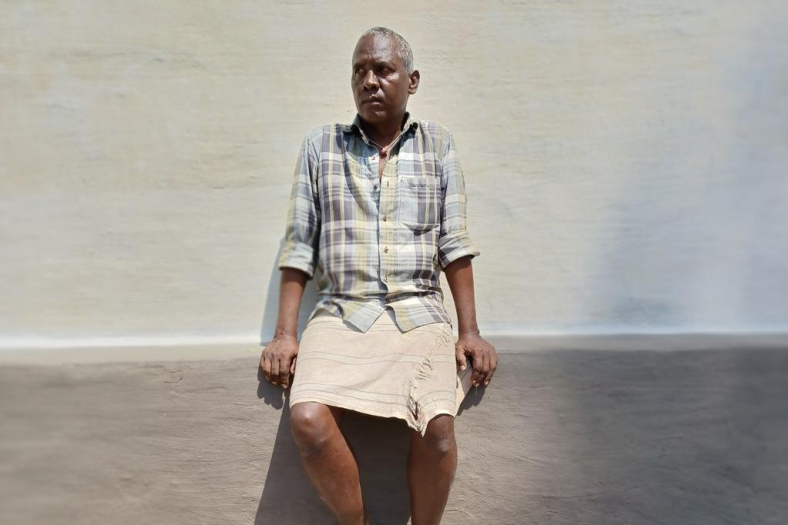
Money. Lots of money.
‘Everyone becomes dependent on coal once the mine becomes operational,’ says Harishwar Dayal, director of the Centre for Fiscal Studies in Ranchi, the capital of Jharkhand. ‘The people who have to move will lose the opportunity to make a living from agriculture or forestry. They hope for a permanent job, but most of them have to make do with collecting and selling coal. Or they go to work in abandoned coal mines, where they are exploited and actually engage in illegal mining.
The really good jobs in the mines usually go to better-educated migrants from other states. Many small businesses, such as brick kilns, run on coal from the informal sector, while large industries are supplied by state mines. But families also rely on coal for cooking.’ In short, coal dust descends on all the lives of those who live near a mine.
‘The royalties paid by the mines on coal mining are the main source of income for the state government.’
Coal does not only turn the lives of local people upside down. It also permanently reshapes the political and economic balance of power. This explains why both the central government in Delhi and the state government in Jharkhand are fully committed to coal. Harishwar Dayal: ‘The royalties paid by the mines on coal mining are the main source of income for the state government.’
‘And what’s more, coal in Jharkhand ensures India’s energy security’, adds Arun Kumar. He is deputy director of the state’s Mining Department. Coal provides 70 per cent of the state government’s revenue and 60 per cent of its electricity. ‘You can imagine how easy it will be to discuss energy transition here,’ he says with more than a tinge of irony, after we chase two pigeons out of his office.
When I ask whether Jharkhand can survive without coal, he continues: ‘We want to double coal production in the next ten years. Does that create a conflict between mining and the environment, between economic growth and climate? Undoubtedly. But we cannot build a future without mines. One day, scenarios will be drawn up for a country without coal, but we are not ready for that yet.’
Half an hour later, when all the files have finally been gone through and signed off, Kumar pauses. ‘Man’s greed and the demands of a technological world are causing us to damage our own lives and the existence of the planet,’ he says, suddenly.
‘The greed he is talking about exists,’ Kuntala Lahiri-Dutt, the pre-eminent coal expert, replies when I mention it, ‘but it is mainly found in the coal mafia.’ That term pops up everywhere: in the villages under threat, during conversations with academics, trade union leaders and activists, in literature and — inevitably — also in Bollywood, where Gangs of Wasseypur was responsible for a lot of screen blood and sold tickets ten years ago.
‘India is one of the most corrupt countries in the world anyway,’ says Lahiri-Dutt over the phone, as she works as a researcher at the Australian National University in Canberra. ‘In a region like Jharkhand, it is mainly local subcontractors and transport companies who are attracted by the huge amounts of money involved in the coal sector. They are prepared to pay a lot of bribes for this, and politicians need those bribes for their own re-election campaigns.’
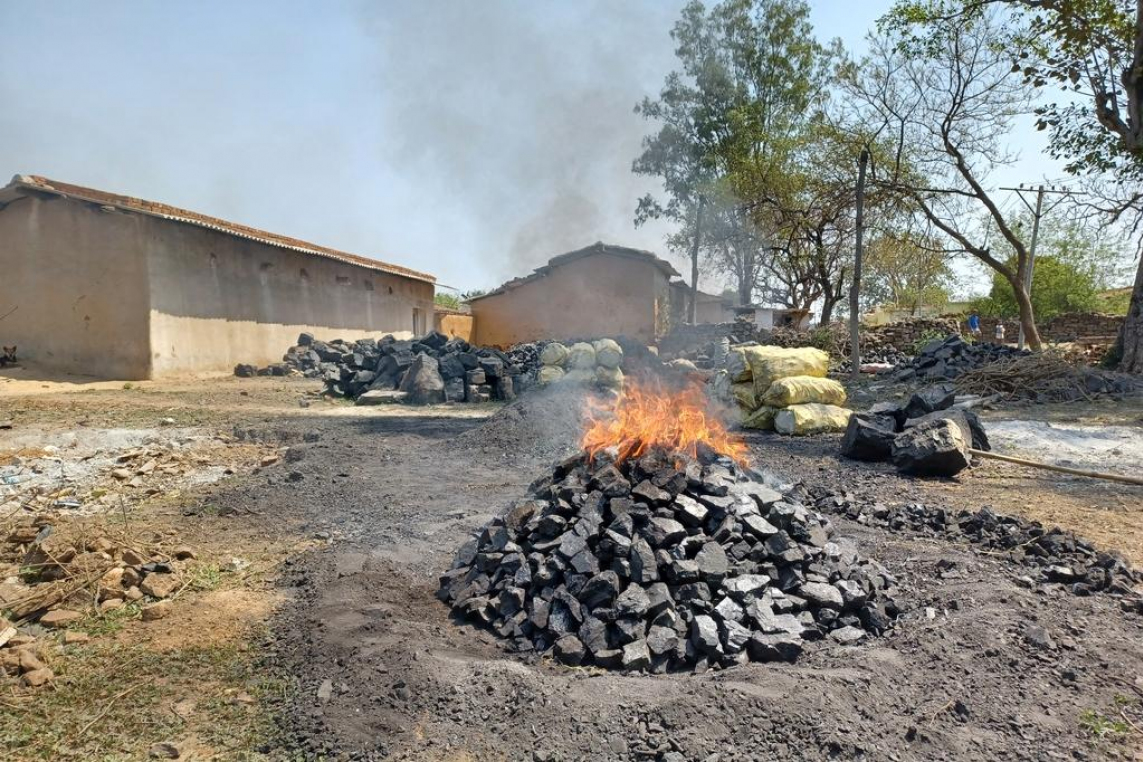
“Coking’ in the middle of the village of Durukheshmar.
Gie Goris (CC BY-NC 2.0)
Just transition, anyone?
Not only does greed exist, but the scenarios that Arun Kumar expects to be written one day, already exist, too. Not yet in the universe of government administrations or industrial conglomerates, but in the think tanks of Delhi or in research funded with international money.
Sandeep Pai of the Center for Strategic and International Studies in Washington, for example, is researching what a just energy transition would mean for Jharkhand. ‘For starters,’ he says on the phone from Montreal, ‘the real question is not when the last coal mine in Jharkhand will close, but when the last one will open. Ditto for the coal fired power plants, which are still relatively young and new ones are planned.
The production and use of coal will continue to increase, although it should really peak in around 20 years’ time. Anyone who wants to think about a just transition,’ he adds, ‘must actually start by making the current exploitation just.’
‘Anyone who wants to think about a just transition, must actually start by making the current exploitation just.’
This is also the opinion of Lahiri-Dutt. ‘Justice is an empty concept if you use it within the current coal economy,’ she says. ‘If anyone, other than the state or the corporations, is taken care of, it is for the civil servants and the minority of permanent workers. The hundreds of thousands who lost their homes and incomes, or who survive on the grey margins of the official story, deserve justice now. Because if they are forgotten now, they will count for even less when the switch to renewable energy production is made later.’
‘That forgotten group is 80 to 90 percent of the people affected by coal and therefore by transition,’ says Chandra Bhushan, of the International Forum for Environment, Sustainability & Technology in Delhi. ‘Those people don’t actually have any interest in or lover for coal,’ he adds in an interview with Sandeep Pai. ‘If they get the opportunity — through better education or through other work, they will leave coal behind immediately.’ But there is no increase in investment in education, let alone in (re)schooling adults, in Jharkhand.
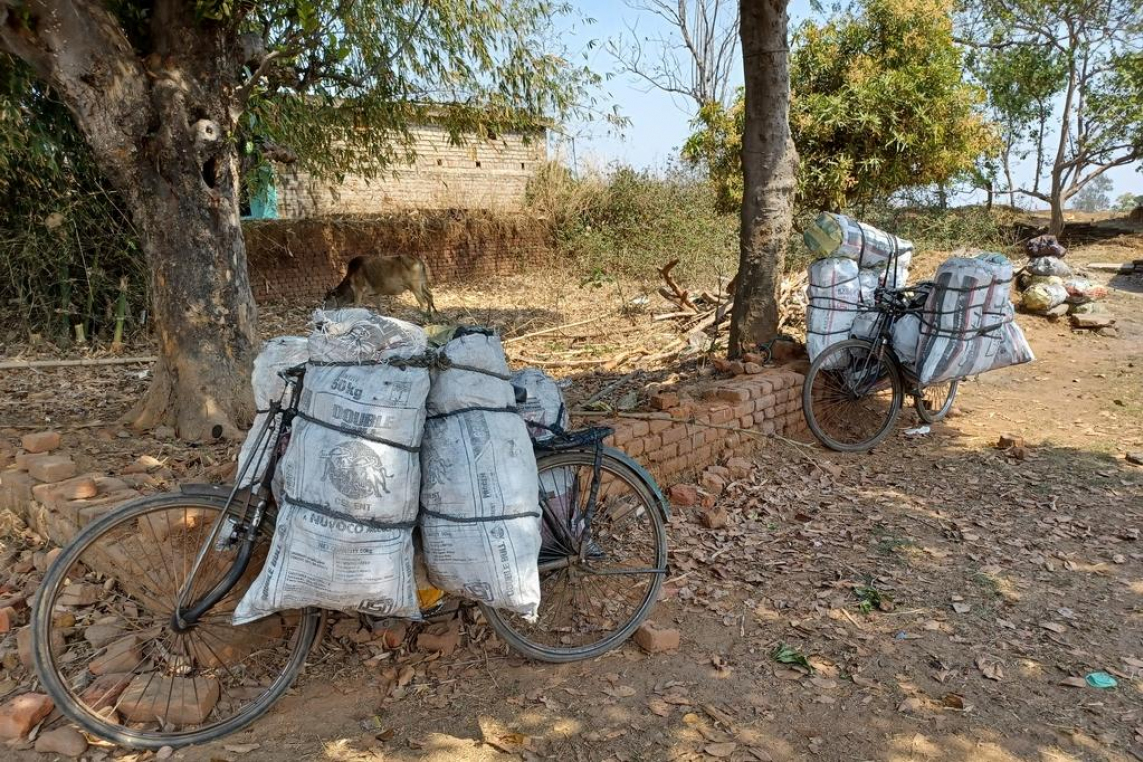
84 / 5.000 Vertaalresultaten Coal collected informally is transported tens of kilometers by bicycle.
Gie Goris (CC BY-NC 2.0)
When I ask Sergio Murmu in Durukeshmar what he would do if the coal mine, which threatens his home and village, were to close permanently, he does not have to think for long: ‘I would migrate to another state. I cannot go back to farming as I have no land left, and with my few years of primary education and my past as a koilawalla, I have no future here. I have two children, aged two and five. I hope their future looks less black than my present.’
‘Just transition is not a matter of climate, but of development’, underlines Chandra Bhushan. Sunita Narain of the Centre for Science and Environment does not believe that climate and development should be pitted against each other. In a country like India, real development opportunities for the majority of the population are as urgent as climate policy, she believes.
‘Neither will be achieved in the coming decades with sun and wind alone. That is why India will need natural gas to move away from polluting and suffocating coal.’
Without knowing about the recent energy discussions in Belgium, she adds: ‘But gas is not really an option for the rich North. You have long used up your CO2 budget and you have the means to invest in clean energy immediately.’
Maak MO* mee mogelijk.
Word proMO* net als 2793 andere lezers en maak MO* mee mogelijk. Zo blijven al onze verhalen gratis online beschikbaar voor iédereen.
Meer verhalen
-
Report
-
Report
-
Report
-
Interview
-
Analysis
-
Report










 Oxfam België
Oxfam België Handicap International
Handicap International